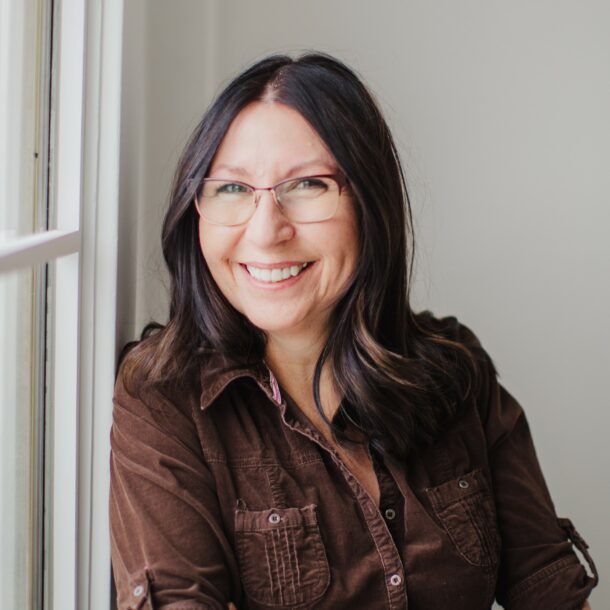Hello, I’m Deidre Havrelock a Christian feminist, granddaughter of Nellie Makokis Carlson—a truly amazing feminist who helped form Indian Rights for Indian Women in the 1970s. I personally seek to understand and advance equality between Christian men and women. I do this because I believe in the full restoration of Eve. This includes acknowledging Eve and her daughters as created in the image of the Holy Spirit.
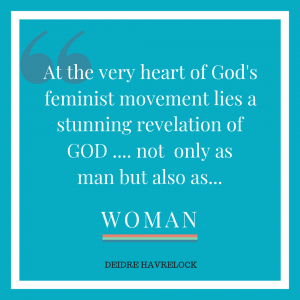
Therefore, just as women have had to struggle to be accepted as “real persons” with gifts to help and lead, so too has the feminine aspect of God sought to reveal Herself. At the very heart of God’s feminist movement lies a stunning revelation of God — not only as man (Jesus) — but also as woman (Spirit).
Ultimately, I seek to restore woman’s God-given identity as fully-fledged image bearers, and birth in us renewed relationship with the glorious Spirit of God.
Born to be a Christian Feminist…
In order to understand my story and how I came to the revelation of God as Mother, I think it’s important to understand my grandmother’s story. My grandmother was an official feminist. The bold, in-your-face, never compromising kind of feminist that people often shun. She, Nellie Makokis Carlson, helped found the organization Indian Rights for Indian Women back in the 1970s while living in Edmonton, Alberta, Canada where I was born in 1970. Her cause became known as Bill-C31. She fought to reinstate treaty rights to Indian women who had lost their rights after marrying non-Indian men.
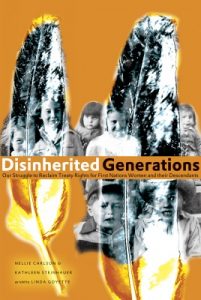
A Little Background…
My great, great, great grandfather was Cree. His name was Chief Little Hunter. He signed a treaty for Saddle Lake Band called Treaty Six at Fort Carlton and Fort Pitt along with Chief Kehewin (also Cree, and also my great, great, great grandfather on my grandfather’s side) in 1867. Back then Indigenous leaders agreed to meet with the Queen’s representatives because they understood one thing: their way of life was coming to an abrupt end. Their main food source the buffalo had been made nearly extinct—starvation was setting in, and increasingly new people (European settlers) were moving into Indigenous territories to farm the land; plus, countless Indigenous people had already died due to disease. Change wasn’t just in the air. Death was.
When I think of those Chiefs who gathered under duress to negotiate the treaties, I understand their great hope was for their children’s survival. They went into solemn deliberations with the Queen with one thing on their hearts… life.
However, once treaties between the Queen and Indigenous Peoples were negotiated and established, the Canadian government realized guidelines were needed in order to determine who an actual “Indian person” was. An Indian person, after all, was now by law entitled to “treaty benefits” (such as health and education) in exchange for the “benefit” of using Indigenous lands. By 1876 the Government of Canada introduced the first Indian Act. It defined an “official Indian” as “any male person of Indian blood reputed to belong to a band, any child of such a person and any woman lawfully married to such a person.” Because of this act, the only Indian person that actually existed in Canada was that of a male Indian. Women were classified “Indian” only in relation to the person of their husband or father.
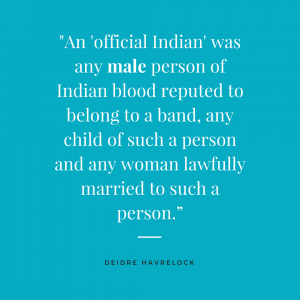
- The Indian Act section on women and marriage was changed six times over the years. On the sixth time, the women and their children lost all rights and were arbitrarily deleted from band membership lists. The changes were discussed between 1946 and 1950. At that time, many of my relatives—Ralph Steinhauer, George Hunter, Edward Cardinal—were on the band council at Saddle Lake. I remember two of them came to me and said: “The women lost.” They [the men] voted against us, and allowed women of other races to remain as status Indian. –Nellie Makokis Carlson, Disinherited Generations
You see, Indian men who married non-Indian women were allowed to invoke full Indian status over their wives—no matter what her nationality might be. By the grace of seemingly God—both his wife and children would now be considered Indian, gaining all rights that came along with that union of marriage. In essence, the non-Indian wife morphed into the official Indian person that her husband was. Whereas, an Indian woman upon marrying a non-Indian morphed into whatever nationality he was. It was argued that this was the natural way—women were to follow their husbands, and they should remain silent on the matter.
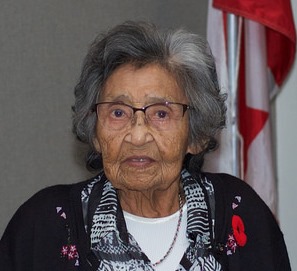
My Story —
My life has been nothing like my grandmother’s. I grew up not on a reservation surrounded by numerous family members, but in the city with my mom, dad and one brother. I went to school not at an isolated residential school, but at a school only three blocks from home. I felt at times (like when around family) too “white” (I always wished I was a so-called “full-blooded” Indian) and at other times (like in school) too “Indian” (sadly, the Cree and Blackfoot children at my school were often treated derogatorily). I grew up not fighting the government but fighting my own demons. My innermost passion was not for Indian Women’s rights, rather my deepest desire was to find God—and God eventually led me to Jesus. (I’ve written a memoir about my childhood, you can find it here.)
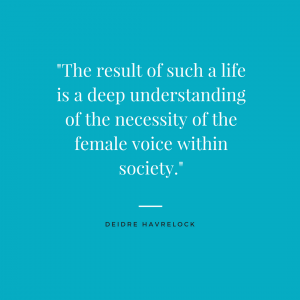
Growing up watching and listening to my grandmother has, no doubt, left me with some passionate residue regarding the female agenda and since God uses every part of our background for good, it only figures God would lead me toward a revelation of God as Mother. After all, what God reveals in the natural soon is revealed in the spiritual as 1 Corinthians 15:46 says, “But it is not the spiritual that is first, but the physical, and then the spiritual.”
Women as Persons
Having brought up how God first manifests the natural and then, later, the spiritual, let’s remember this disquieting fact: women were first declared “persons” in Canada in the year 1929 (whereas First Nations women began being treated as persons in the year 1985). Similarly, the United States also had its own feminist battle for freedom going on: prior to 1920 only males were trusted with the responsibility to vote in elections and to lead their country (even though their very symbol for freedom was that of a woman—the Statue of Liberty).
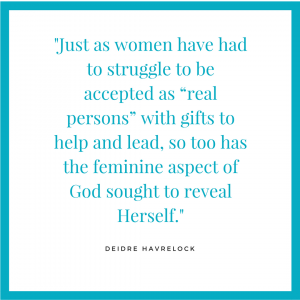
By observing and remembering the struggle of the female population to be “loosed” from man’s desire to “rule” independent of woman to the point of disregarding her actual personage, we can draw a rather sad conclusion regarding the state of our spiritual realm: Just as women have had to struggle to be accepted as “real persons” with gifts to help and lead, so too has the feminine aspect of God sought to reveal Herself. At the very heart of God’s feminist movement lies a stunning revelation of God — not only as man — but also as woman.
After all, if women represent the image of the Holy Spirit — as I wholeheartedly believe they do — then what we see manifesting in woman’s journey on earth reveals to us what is happening with the Holy Spirit. She is the mysterious Holy Ghost and the divine incognito — the presumed “unseen” mystery of God — characterized by a gentle dove and heralded as humankind’s helper. She is deeply desired but strangely allusive. She brings ultimate freedom and unending life; yet, she is more than this. She is a person.
My Mission – #WomantheOtherImageofGod
My grandmother was a feminist and so I grew up with a respect for feminism. My role models were of very strong, opinionated First Nations women. My grandmother was a political whirlwind. She fought against a law that stated only First Nations men were “persons,” and as persons they were afforded certain rights that First Nations women did not have. I remember at age 14, my grandmother took me with her to parliament (in Canada) to speak about amending the Indian Act (through a bill called Bill C-31). As I was sitting there listening to my grandmother speak, I thought, “God, what am I doing here? What are you showing me?”
I had always been more of a spiritual person rather than any sort of political or feminist-minded person and my belief in God was somewhat strong and so to me this moment was obviously one of those “God-moments.” I knew God was showing me something but (at that age) I had no idea what it was. I knew it had something to do with the strange struggle women had to go through in order to become “persons.” Think of it, women of all ethnic and cultural backgrounds have had to fight systems in order to prove we are actual persons. Bizarre, right?
I became a Christian in 1992 and I fell in love with Jesus and his message of restoration. One year after becoming a Christian my relationship with the Holy Spirit began. The Spirit was never a “force” or an invisible “power” to me. The Spirit revealed Herself to me as a person — and this person had given me “spiritual birth” that day when I dedicated my life to Jesus. Therefore, God was a Mother to me and my intimacy with the Spirit from that point flourished.
I joined a church around this same time (at the age of 25) and about four years into it, I realized the church had no deep relationship with the Spirit. I heard things like the Spirit doesn’t want to be known — the Spirit always highlights Jesus and never takes the spotlight. The Spirit is the divine incognito. The Spirit is invisible, hidden behind mystery, gentle and quiet. But this was in no way congruent with how my relationship with Spirit played out. It was also not biblical. Jesus expressly sent the Spirit to us to be our teacher and guide. How can the Spirit teach and guide us if the Spirit doesn’t want to be known or seen? I also realized that women were being held back from being released into ministry. I thought how strange it was that the Church was just like the worldly system outside.
Eventually, the Holy Spirit began speaking to me about Her image bearers – women. I now understand what I was being shown that day in parliament – the church’s neglect of the Holy Spirit and the marginalizing of women are interconnected. Our enemy hopes we will elevate and pursue only the male image of God (Jesus), forgetting the female image of God (Spirit) even exists. After all, if women become fully fledged “persons” – image bearers in their own right – then suddenly the revelation of the person of the Holy Spirit will be released in ways we have not experienced as of yet.
Our enemy’s plan is to limit our knowledge and relationship with the Spirit (and women) in order to keep the Church operating as a partial kingdom — but Jesus and the Spirit always work as a team in perfect unity; therefore, so should men and women. We are not equal but different — we, men and women, are divine image bearers. We represent Almighty God on earth.
Our relationship with the Holy Spirit should be just as close and intimate as Jesus’ relationship was with his disciples. The Holy Spirit is, after all, God on earth—our helper, teacher, friend, guide and our Mother. -Deidre Havrelock
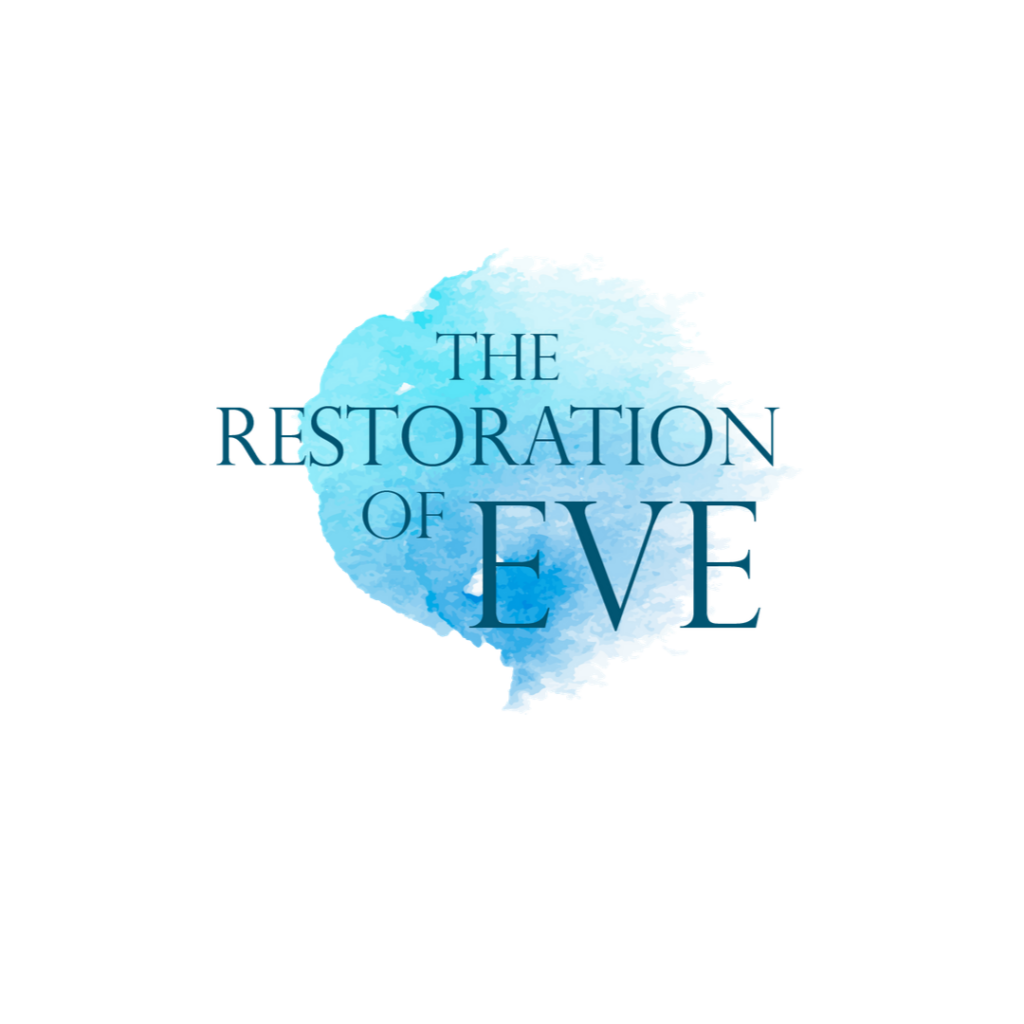
The Spirit and Woman are so enigmatically interconnected that as the Church works to embrace the “Eve” they’ve rejected — somehow, in mysterious imitation — the Spirit manifests and grows more intimate with us.




